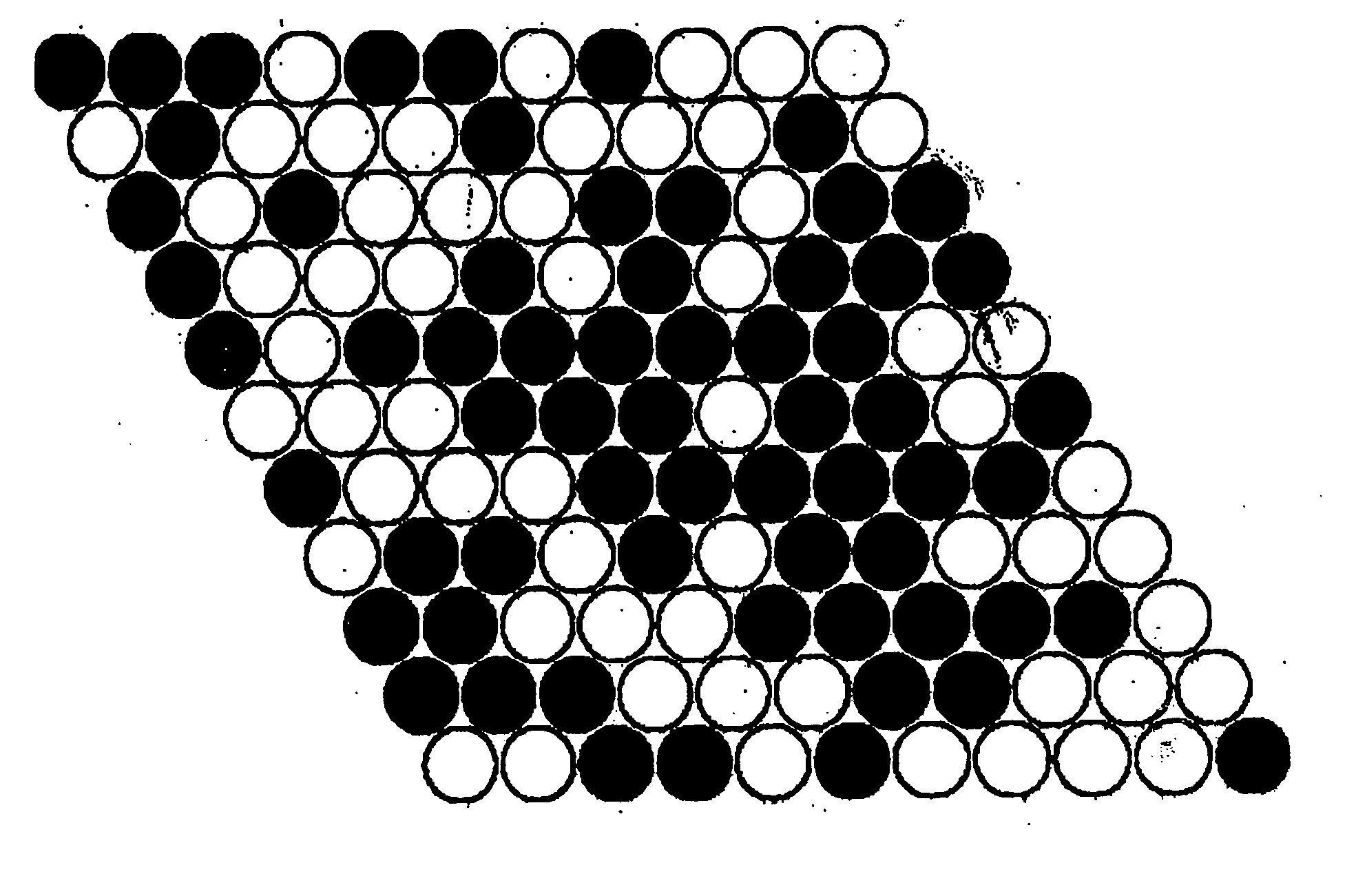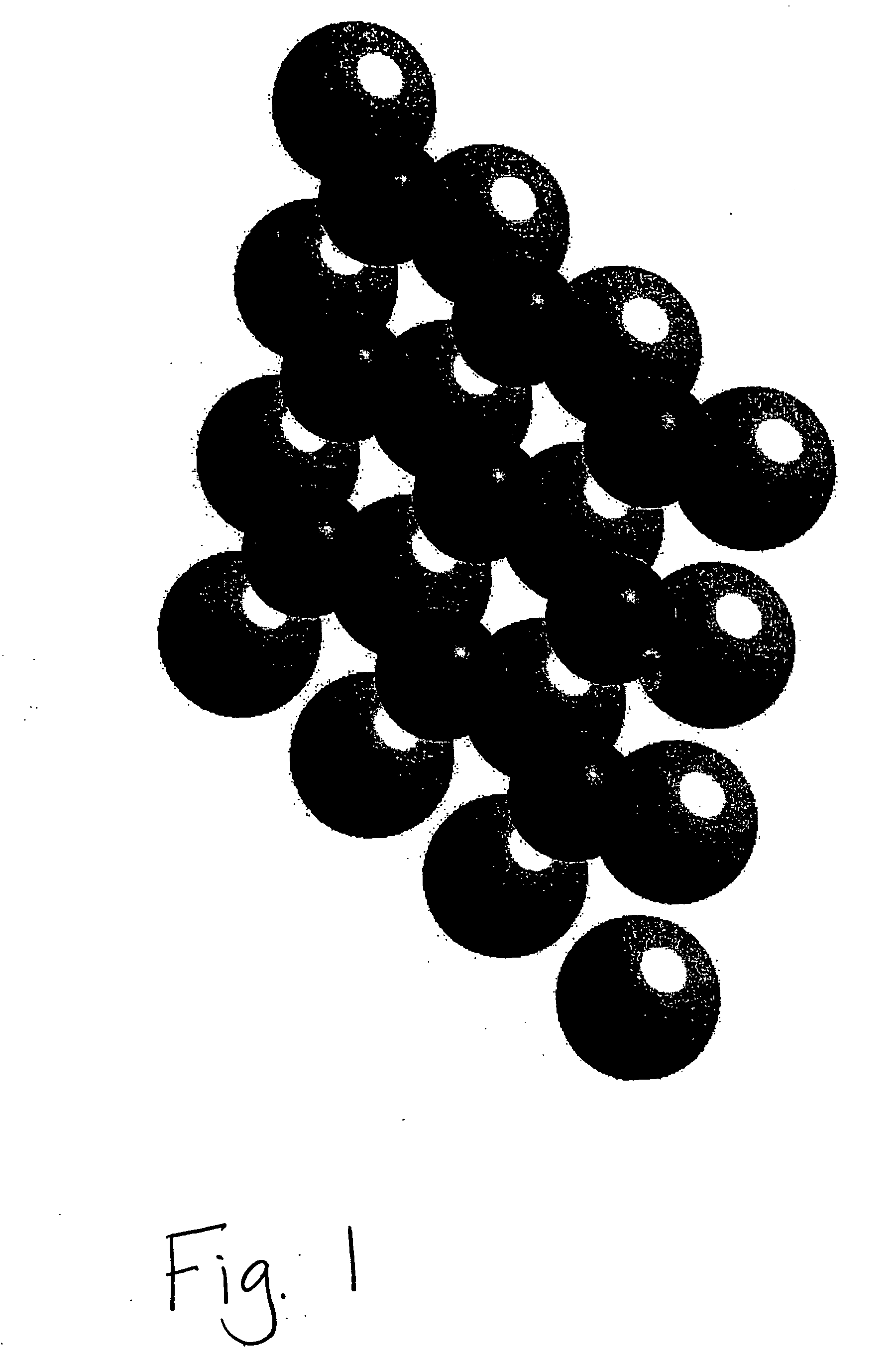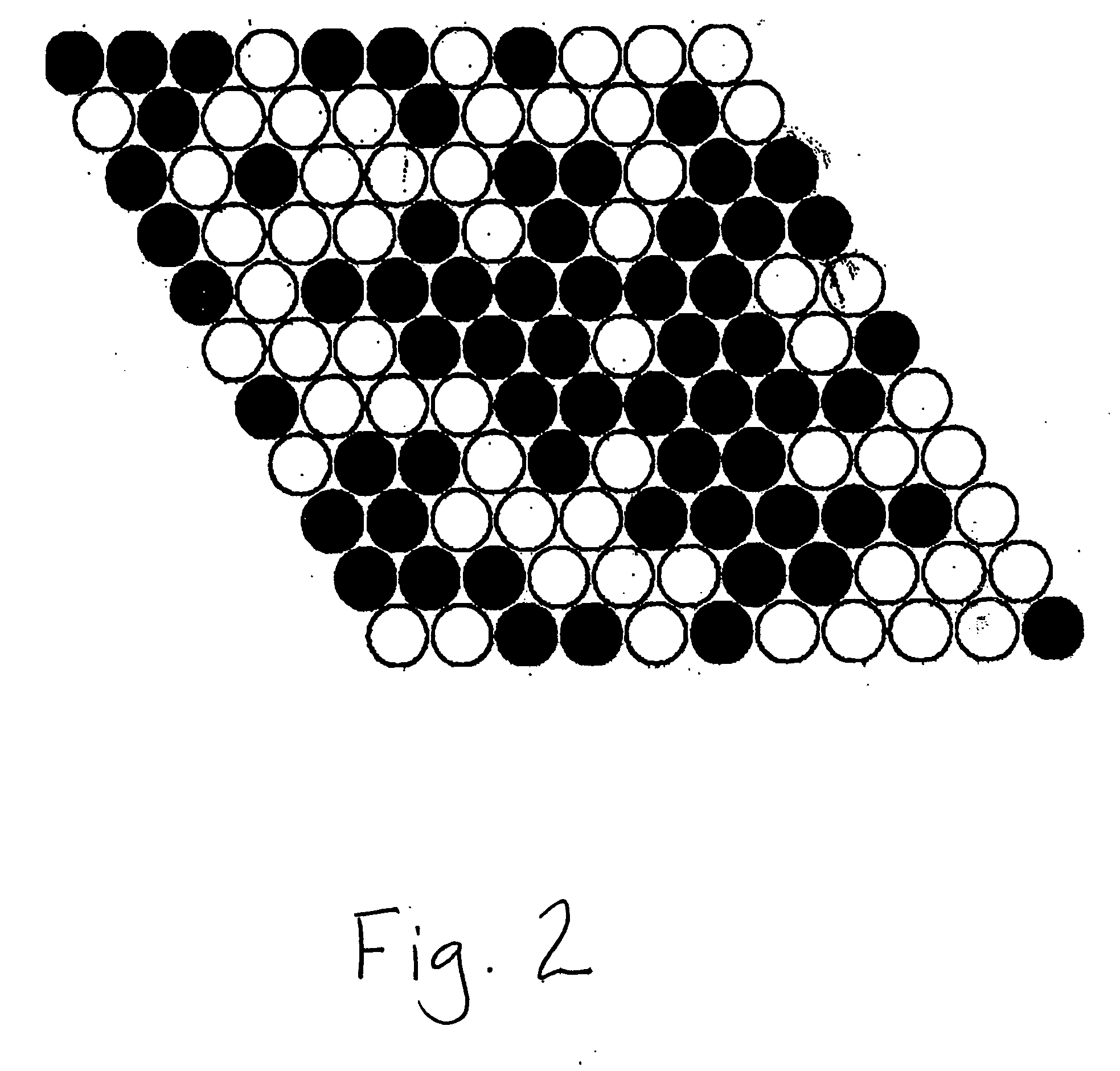Intermetallic compounds for use as catalysts and catalytic systems
- Summary
- Abstract
- Description
- Claims
- Application Information
AI Technical Summary
Benefits of technology
Problems solved by technology
Method used
Image
Examples
example 1
[0085] This example illustrates the improved performance of an electrode formed from an ordered intermetallic compound (BiPt) according to one embodiment of the present invention and, in some cases, compares the performance to a conventional solid metal electrode.
[0086] Sample Preparation and Experimental System
[0087] A BiPt ordered intermetallic compound was prepared using the following procedure. Platinum powder (Johnson Matthey 99.999%) was mixed with bismuth powder from pellets (Alfa Aesar, 99.9999%) in a 1:1 molar ratio to obtain a 1.5 gram mixture. The mixture was thoroughly mixed using an agate mortar and pellets (6 mm O.D., 4 mm length) were pressed using a hydraulic press and a force of 3500 pounds. The pellets were sealed in evacuated fused silica tubes (10 mm I.D., 10 cm length) and placed upright in a box furnace. The tubes were heated at 800.degree. C. for 24 hours and annealed at 650.degree. C. for 48 hours. The pellets were ground to form a powder mixture which was mi...
example 2
[0126] This example illustrates the improved performance of electrodes formed from a number of different ordered intermetallic compounds and, in some cases, compares the performance to a conventional solid metal electrode.
[0127] Sample Preparation and Experimental System
[0128] PtBi.sub.2, PtPb, PtIn, PtIn.sub.2, Pt.sub.3In.sub.7, PtSn.sub.2, PtSn.sub.4, PtSb, PdBi, and PdSb intermetallic compounds were prepared using the following procedure. Stoichiometric amounts of platinum or palladium powder and powder of the appropriate second metal were sealed under vacuum in a silica tube. The samples were then heated (see Table 1 for temperatures) in a box furnace and held for from nine to twelve hours at that temperature before quenching to room temperature. Samples that exhibit peritectic decomposition typically needed to be annealed below the peritectic temperature for up to several days to achieve reasonable phase purity.
1 TABLE 1 Intermetallic Phase Temperature (.degree. C.) PtBi.sub.2 ...
example 3
[0159] The poisoning effects of thiophene (a representative sulfur containing material) was examined on Pt and PtPb intermetallic compound electrodes. In these experiments, the electrodes (Pt, PtPb) were in contact with a 0.5M solution of formic acid in 0.1M sulfuric acid. An initial potential of -0.3 volts was applied and then changed to +0.3; a value where formic acid is oxidized at both electrodes. After the current had stabilized, (after 1700 sec.) 50 .mu.L of a solution of thiophene in ethanol were added so that the thiophene concentration was 8.5 ppm (parts per million).
[0160] FIG. 19A shows a precipitous drop of the current to essentially background levels in a very short time period for the Pt electrode.
[0161] FIG. 19B shows a slow, initial drop of about 30% and maintenance of a stable current at about 70% of the level present prior to the injection of thiophene for the PtPb electrode.
[0162] The results suggest that the PtPb retains a high degree (70%) of activity even in th...
PUM
| Property | Measurement | Unit |
|---|---|---|
| Fraction | aaaaa | aaaaa |
| Fraction | aaaaa | aaaaa |
| Fraction | aaaaa | aaaaa |
Abstract
Description
Claims
Application Information
 Login to View More
Login to View More - R&D
- Intellectual Property
- Life Sciences
- Materials
- Tech Scout
- Unparalleled Data Quality
- Higher Quality Content
- 60% Fewer Hallucinations
Browse by: Latest US Patents, China's latest patents, Technical Efficacy Thesaurus, Application Domain, Technology Topic, Popular Technical Reports.
© 2025 PatSnap. All rights reserved.Legal|Privacy policy|Modern Slavery Act Transparency Statement|Sitemap|About US| Contact US: help@patsnap.com



